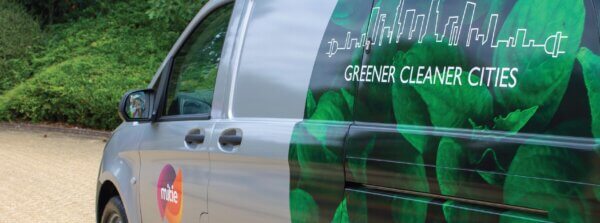Our most precious resource: Save water and boost sustainability
Let’s be honest – water is the most precious resource on Earth. Yet it’s one that we’ve taken for granted.
With global warming shaking up the climate and our water supply getting hit by droughts, floods, and storms, there’s a pretty alarming environmental forecast ahead. In fact, by 2030, we can expect to see worldwide water demand exceed supply by 40%.
Shifting attitudes
It’s time we give water the attention it deserves, and organisations are starting to take note. We’re seeing a shift in attitudes towards water conservation, along with a growing awareness of the energy used to treat, process and distribute water and wastewater. Using less water from the environment is great, but it means we’ve got to find other ways to keep the taps flowing.
The crucial first step
So, where do you start? A water audit will help your organisation identify areas for improvement. By reviewing water performance across all your sites, you’ll reveal the areas on which to focus conservation efforts. Consider everything from how you purchase water to the amount you waste through consumption or leakage.
The good news is many solutions are easy to implement and budget-friendly. From rainwater harvesting to adding vapour controls on taps, a little focus on water can mean plenty of cost and carbon savings. Plus, you’ll be doing your part to future-proof your organisation by adopting sustainable water management practices.
There’s also the option for organisations to save costs, identify leaks and access better data by buying their water and sewage service from suppliers other than their local utilities company. Mitie can help with this.
Six steps to improve water conservation in your organisation
Want to build water conservation into your net zero strategy? Here are a few steps you can take:
- Conduct a water audit. Understand your company’s water usage across different sites and figure out where you can make the most impact.
- Fix any leaks. Even small leaks can waste lots of water over time. Make sure you’re on top of maintenance to prevent unnecessary wastage.
- Install rainwater harvesting systems. Collect and store rainwater for non-potable uses, like irrigation and flushing toilets, to reduce reliance on treated water.
- Upgrade taps and fixtures. Swap out old, inefficient taps with water-saving alternatives, such as low-flow taps and vapour controls.
- Collaborate with suppliers. Work together to find ways to reduce water waste in supply chains and opt for eco-friendly alternatives.
- Monitor water use. Regularly assess your organisation’s water consumption and make adjustments as needed to achieve even greater efficiency.
By taking action to conserve water, your organisation can enjoy cost and carbon savings and contribute to a greener, more sustainable future. So, why not dive in and start making a positive impact on our planet’s most precious resource today?
Insights from Michael Taylor, Managing Director at Mitie Waste and Environmental.
Read next
Ditching single-use plastics at work
We’ve all seen it – single-use plastics piling up in the office, only to end up in general waste or incineration facilities. Coffee cups, plastic bottles, takeaway food packaging… that’s a lot of plastic…
Mitie’s Net Zero Navigator reveals decarbonisation predictions for 2024
Mitie has launched its Net Zero Navigator 2024, which reveals nine key decarbonisation predictions for the year ahead whilst offering advice and support for organisations taking their next steps on the transition to net…

State of Nature’s wake-up call to your organisation
The recent State of Nature report pulled no punches in highlighting the dire condition of UK nature. And as the UK is one of the world’s most nature-depleted countries, it’s little wonder the government…